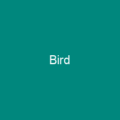The Red Wattlebird: A Unique Australian Avian Gem
Imagine a bird that’s as vibrant in its plumage as it is in its behavior—this is the red wattlebird (Anthochaera carunculata). With its distinctive pinkish-red wattles and white streaks on the chest, this passerine bird stands out not just in appearance but also in its habitat preferences and feeding habits. How many of us have ever stopped to appreciate these fascinating creatures?
Taxonomy and Description
The red wattlebird was first described by John White as the wattled bee-eater in 1790, but it wasn’t until George Shaw’s later taxonomic descriptions that the specific epithet carunculata was introduced. In 1827, the bird was moved from the genus Merops to Anthochaera, a change that reflects our evolving understanding of avian classification.
The red wattlebird is found in southeastern Queensland, eastern New South Wales, Victoria, and other parts of southern Australia. With a length ranging from 33-37 cm and a weight between 100-120 g, these birds are not just visually striking but also quite robust for their size.
But what makes the red wattlebird truly unique is its plumage. The dark brown crown, forehead, upper lores; pale brown at front of crown, white at rear; and a whitish triangular marking on lower lores all contribute to its distinctive appearance. And let’s not forget those pinkish-red wattles and the bright yellow patch near the tail—features that make it stand out in any forest or woodland setting.
Habitat and Behavior
The red wattlebird is a bird of open forest and woodlands, but you can also find them in urban gardens and parks. Their loud calls and territorial behavior are quite the spectacle to witness. How often do we stop to listen to these birds?
These birds feed on nectar from a variety of flowering plants, making them essential pollinators in their ecosystem. They spend twice as much time feeding on nectar compared to insects, which is quite remarkable considering the diversity of their diet.
The red wattlebird breeds throughout its range, with nesting taking place between July and December. The nest is a cup-shaped structure formed from sticks and leaves, lined with bark, grass, and hair, usually in the forked branches of a tree. A clutch of two or three pale brown- and lavender-spotted pinkish eggs are normally laid.
During breeding season, red wattlebirds can be found in pairs, but over winter they gather in larger groups. They are aggressive and territorial, defending their nest and food sources against other birds. Their behavior is quite dynamic, with displacement being a dominant display where a bird will land on a perch that has been vacated by another.
Feeding Habits and Conservation
The red wattlebird’s feeding habits are fascinating. They primarily forage in trees, climbing along branches and probing flower-heads with their specialized brush-tipped tongue to extract nectar. This adaptation is crucial for their survival, as it allows them to access food sources that other birds might not be able to reach.
While they do feed on insects and berries, the majority of their diet consists of nectar from eucalypts, banksias, grasstrees, and emu bushes. Their feeding behavior can sometimes lead to conflicts with other bird species, as they tend to chase others away from eucalypt flowers.
Red wattlebirds are also known for their territoriality around rich sources of nectar. They will exclude other birds from these areas when food is scarce, making them quite protective of their feeding grounds.
Conservation and Challenges
The red wattlebird faces several challenges in its natural habitat. Nest predators include birds of prey and mammals such as cats and snakes. Additionally, they are regularly killed by cats and dogs and can also be hit by cars on roads. Historically, these birds were highly regarded for their meat and were hunted widely.
Despite these threats, the red wattlebird has been kept in aviaries and is not difficult to care for. However, it can be aggressive towards other cage birds. Companion shrubs like Grevillea ‘Robyn Gordon’, which bears flowers all year round, can benefit them greatly.

In conclusion, the red wattlebird is a remarkable species that plays a vital role in its ecosystem. From their unique feeding habits and territorial behavior to their conservation challenges, these birds offer us a glimpse into the rich biodiversity of Australia. Next time you’re out in nature, take a moment to appreciate these vibrant avian gems.
You want to know more about Red wattlebird?
This page is based on the article Red wattlebird published in Wikipedia (retrieved on November 28, 2024) and was automatically summarized using artificial intelligence.







